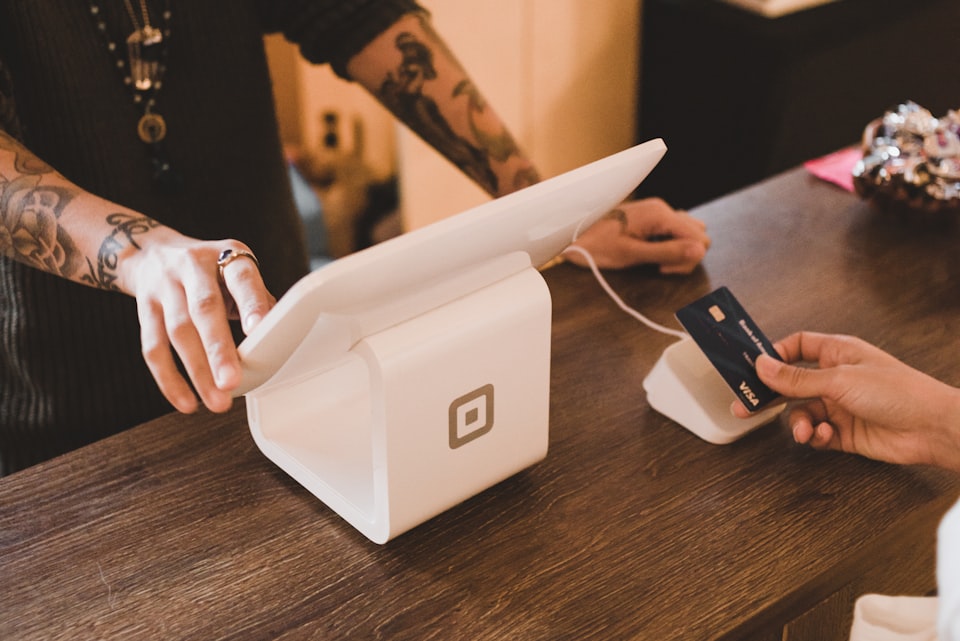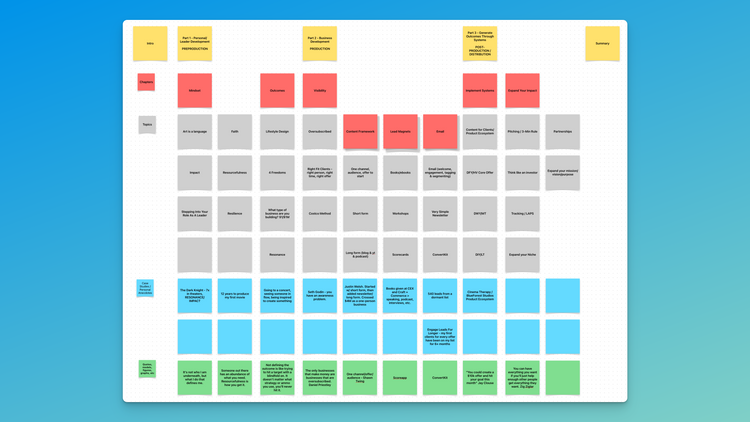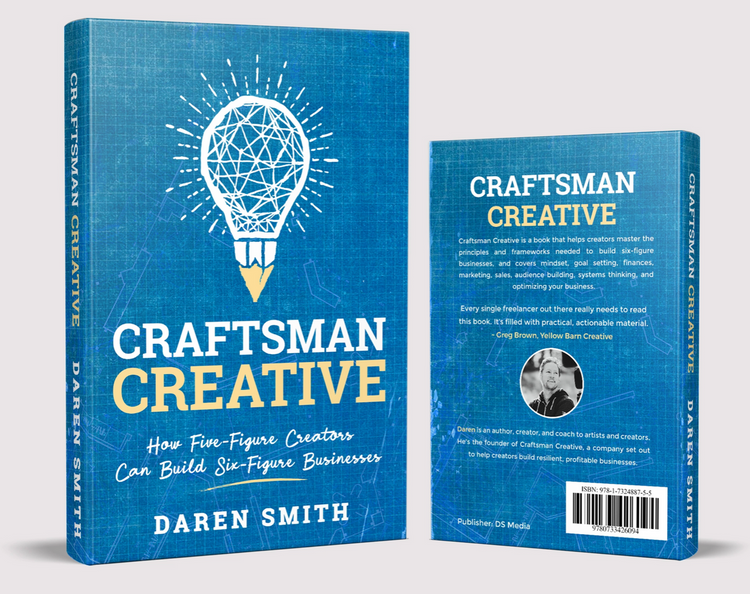How Much To Charge For Your Work

In the last chapter we covered a very important principle: build a profitable business from the start.
One way to do that is to take profit first, as we discussed.
This next principle goes hand in hand, and if you don't follow it you'll not be able to create that profitable business.
Too many businesses price their products and services arbitrarily, based on the "industry standard" or based on their experience.
Those two may provide good starting points, but if you don't take it one step further, you'll price yourself out of business.
Charge enough to have a profitable business.
You need to understand your numbers and your business well enough to know what you need to charge in order to be profitable.
Notice I didn't say "profitable once you reach a certain point". I mean profitable from the start, with every single sale and every single purchase.
Start With Part-Time Profitability
When you start your creative business, it's unlikely that you'll come out of the gate making $10,000 a month unless you've built up enough demand prior to starting your business.
That's entirely possible, but it's not the most common way that creatives start their businesses.
(Important note - audience first, which we'll talk about in a later chapter, is a massive lever that can be used to start very profitable businesses.)
Instead, most creatives start out with a side-hustle. Maybe they're a graphic designer who starts taking some freelance projects in the evenings and weekends.
Or they are someone with a 9-5 job who starts writing, or playing gigs, or taking photoshoots when they're not working.
The income from this work isn't enough to leave their job, yet, but if they don't follow this principle of profitable from the start, they'll never be able to make that jump from a 9-5 employee to a six-figure business owner.
Part-time profitability means that the income from every single project and sale follows the profit-first budget split covered in the last chapter.
5% profit
60% owner's pay
15% taxes
20% operating expenses
That means that you as the business owner don't take 100% of the money from your business and spend it. Instead, you set aside money for profit, taxes, and operating expenses, and potentially in a greater percentage than outlined here, since your 9-5 is covering your income.
The more money you save and invest in the business the more it will grow to become something you can do full time.
Here's where a lot of creatives get stuck:
They price their services without accounting for expenses, taxes, and profit.
I know a lot of photographers who would LOVE to shoot film, but "can't" because of the cost.
They would LOSE money on each shoot because they don't account for the extra expense of purchasing and developing film as well as the upkeep of their older cameras.
So, yes, if they took their "digital" photography rate and cut and pasted it onto their "film" rate, they'd lose money, and their business would not be able to grow.
Beyond just expenses, when creatives don't account for profit and taxes in their pricing, they inherently stunt their growth because there's never any money to invest in the business.
In order for your part-time profitability to lead to a full-time business, you have to price these things in from the start.
Reverse Engineer Your Pricing
There are two ways to look at how to price your work:
- How much do you need to make?
- How much do you want to make?
We'll start with number 1 and then look at number 2 as an alternative.
How much do you NEED to make?
You can take the number you got from the chapter on building your minimum viable business and then divide that per month, per week, per day, per sale, or per project.
You work backward from that outcome to get your pricing.
Let's do a service/project example and a product example:
Pricing your product or service:
Say that you know that you need to make $4,000 a month to provide for yourself and your family. You look over the last three months of your business and realize you do, on average, four projects per month.
At this point, you know you need to charge $1,000 per month, but that's only for your owner's compensation.
You then use the formula of $1,000 ÷ 60% to get the real price of $1,667 per project.
Charge less than this and you run the risk of not having enough profit or enough money for taxes or operating expenses.
Pricing a product:
Say you sell your art or your music at $15 a pop, and once you account for fees you end up with $10 that shows up in your bank account.
You look at the last three months of sales and realize that you're selling 100 each month on average.
100 * $10 = $1,000
This is eye-opening because you either need to charge $75 per sale (netting you $66.67) or sell 6.6x as many each month.
You have options, and we'll talk about increasing sales in a later section, but realize that unless you charge more or sell more, you won't get to your minimum viable business with that pricing structure.
How much do you WANT to make?
This is where most people spend their time, but if you skip past the need model, you'll never get to this stage.
You have to understand the realities of pricing, expenses, and budgeting in your business if you want to be profitable from the start and grow your business.
Ignoring these realities will leave you stuck exactly where you are.
That said, it's fun to look at how to reverse-engineer how much you want to make, so let's look at it:
Say, again, you want to make $100,000 in personal pay from your business.
That means that your business needs to make $100,000 ÷ 60% = $166,667.
Or $13,889 per month.
Or $3,205 per week.
Or $457 per day.
How you reach that goal is the same combination of the number of projects or sales you can generate per month divided into those numbers.
If you can do four projects per month, then divide $13,889 by 4 to get $3,472 per project.
But let's round up to $3,500 to make it a nice round number for the client.
If you currently charge $1,000-2,500 per project, you'll need to figure out if you're going to sell more projects per month or raise your prices.
The specifics around how to structure a deal to be more valuable - for both you AND for the client - is covered in the next chapter, but realize that you can increase your pricing at any time for any reason, the most important being that you can't stay in business if you don't make enough money.
Every business should understand this principle but it seems to escape creators who think that they, for a myriad of reasons, can't charge what they need to charge to have a viable business.
You can charge whatever you want! (Getting people to pay for it is a subject for a later chapter). But you need to get over the idea that you can only charge $X per hour, or per project, or per day, or per item.
It's all arbitrary. There are people who charge $79 for an ebook. $10,000 per wedding for photography. $250 an hour for design work.
You can too, even if you're just starting out or have less experience than someone charging half that.
This goes back to the chapters on mindset. If you believe that you aren't worth more than $40 an hour, you won't ever charge more than $40 an hour.
That's much more damning to your business than anything regarding sales or marketing or pricing.
You have to believe that you are worth more and that you can provide more value than anyone else around you.
That, and how to structure a deal properly, is what we'll cover in the next chapter.
NEXT CHAPTER >

< PREVIOUS CHAPTER








Member discussion